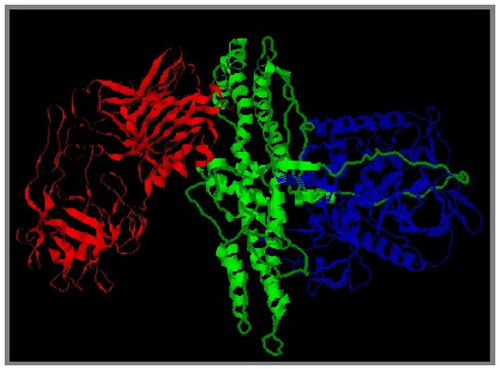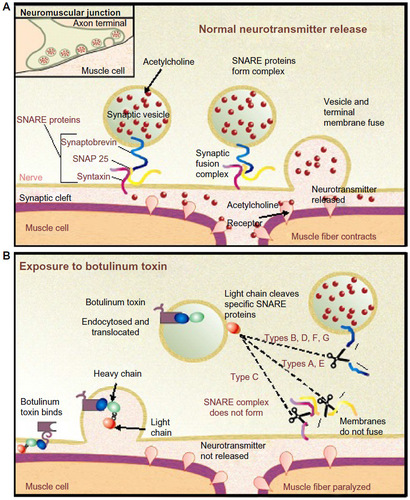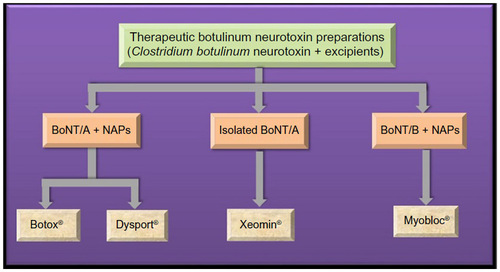Figures & data
Figure 1 Schematic representation of different domains of BoNT/A.
Abbreviation: BoNT/A, botulinum neurotoxin type A.

Figure 2 Schematic model of mode of action of botulinum neurotoxins.
Abbreviations: SNARE, sensitive factor attachment protein receptor; BoNTs, botulinum neurotoxins.

Figure 3 Contents of commercially available therapeutic botulinum formulations.

